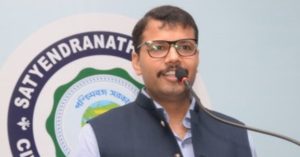Boosting Output by 300%, IAS Officer Turns Jharkhand District Into ‘Ragi Capital of India’
IAS officer Sushant Gaurav won the Prime Minister’s Award for Excellence in Public Administration for his outstanding work of transforming Jharkhand's Gumla district through ragi (finger millet).
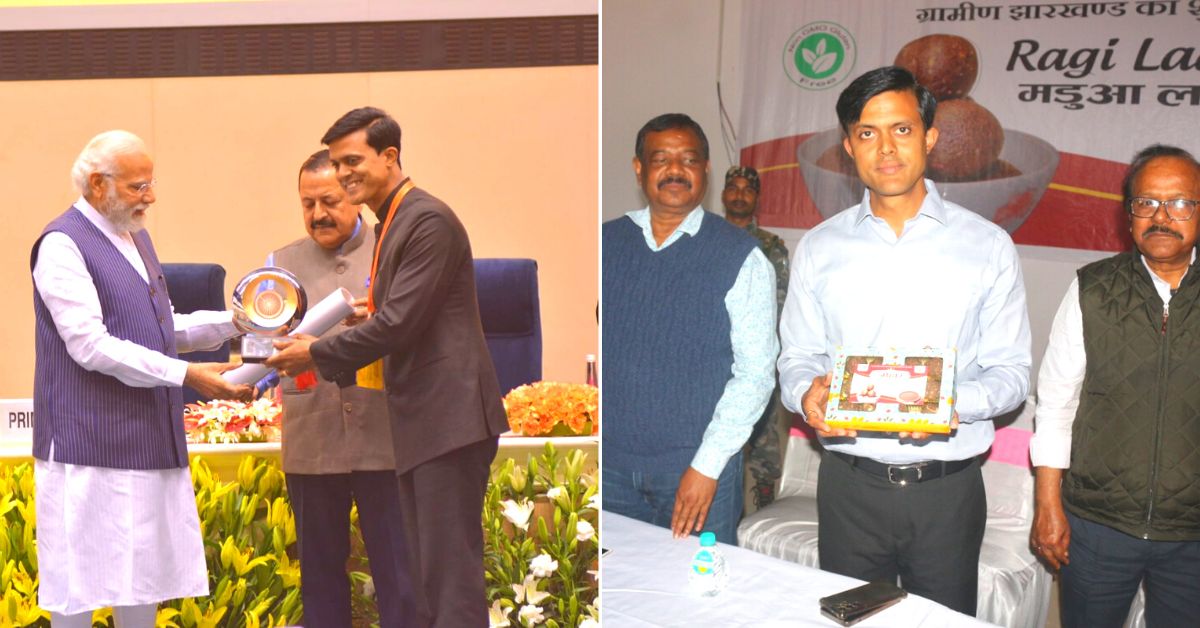
In barely 18 months, Sushant Gaurav, a 2014-batch officer of the Indian Administrative Service (IAS), transformed the poverty-stricken district of Gumla in Jharkhand into a potential hub of economic activity centred around ragi (finger millet).
Posted as deputy commissioner (DC) between February 2022 and August 2023 in a district predominantly inhabited by the indigenous Adivasi communities and marked by decades of Naxalite insurgency, he introduced some game-changing interventions.
Primarily, Sushant brought about a transformation in local agricultural practices by helping thousands of farmers, particularly women, transition from water-guzzling paddy to a more sustainable model of ragi cultivation. He empowered them to leverage that transition into a self-sustaining business opportunity by helping them sell ragi-based products in and out of the state. Given its health benefits, he also employed ragi to address severe anaemia and malnutrition.
Before his arrival, farmers in the district did not cultivate this ‘super grain’. Today, there are approximately 30,000 farmers in the district growing this millet on more than 30,000 acres and largely selling their harvest locally, according to the district’s agriculture department.
Some of these farmers are also part of a successful women-driven Farmer Producer Organisation (FPO) called the ‘Baghima-Palkot Farmer Producer Company Ltd’ selling a variety of ragi-based products.
Speaking to The Better India, Bhagwati Devi, a 40-year-old ragi farmer and member of this FPO, says, “Our organisation [the] Baghima-Palkot Farmer Producer Company, currently makes a variety of items out of ragi including laddoo, cookies, mixture, khajuria, nimki, bhujia, chips and flour. Thanks to the intervention of DC Sushant, we sell some of these items to the local administration, particularly for their ICDS (Integrated Child Development Scheme), and various local markets too. At the Millet Cafe in Gumla, we also serve samosa, pakoda, etc.”
An official closely associated with the FPO claims, “Since May 2023, we have earned approximately Rs 15 lakh through retail sales and Rs 28 lakh through selling food items to the local administration. Our company has generated a total revenue of around Rs 43 lakh.”
For his efforts, Sushant was awarded the Prime Minister’s Award for Excellence in Public Administration in the “holistic development through aspirational district programme — overall progress with special focus on saturation approach” category in April 2023.
What’s more, this initiative was also presented at the Harvard Business School earlier this year by Avinash Kumar, a Mahatma Gandhi National Fellow at the Government of India’s Ministry of Skill Development. Speaking to the National Press earlier this year, Avinash claimed that the institute has also commenced a case study on the ‘Gumla model’ and it will be circulated among other business schools and used in training modules for bureaucrats.
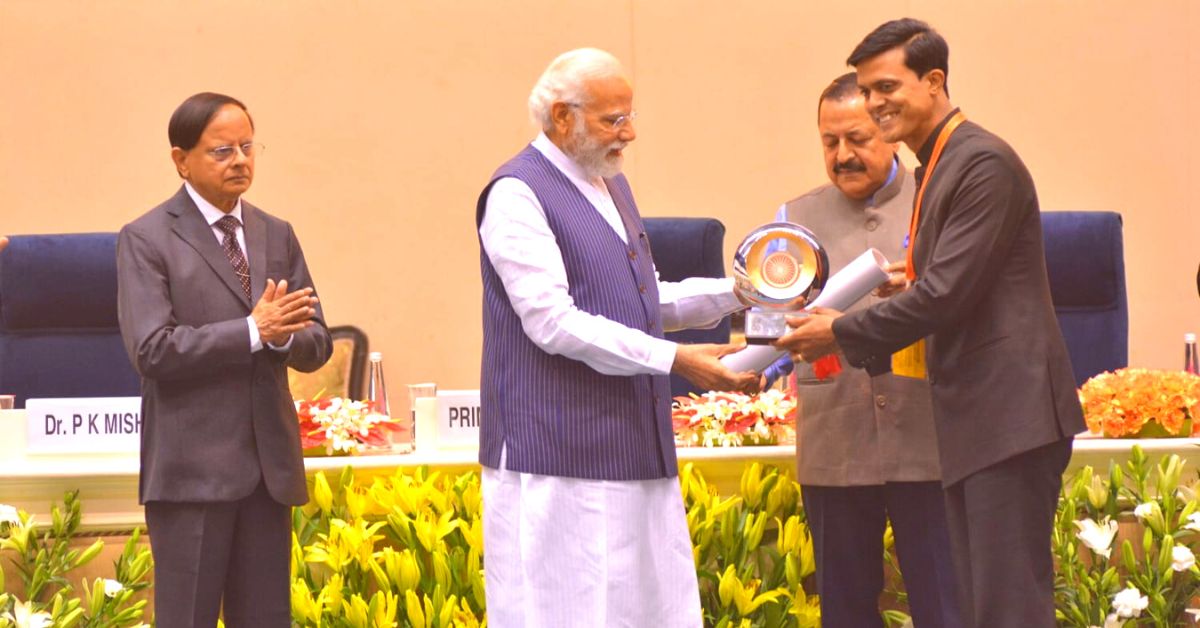
Lay of the land
Located in the southern part of the Chota Nagpur Plateau, about 100 km away from Ranchi, Gumla district is marked by a highly undulating and rugged terrain consisting of flat-topped hills. What Sushant found here was a poverty-stricken populace predominantly dependent on rain-fed agriculture. He noted that due to the lack of irrigation facilities, infrastructure, scientific inputs and marketing, the majority of the families engaged in agriculture don’t earn enough to provide basic necessities to their families.
“About 85% of the population has agriculture as the primary source of livelihood, among whom 90% are small and marginal farmers. They predominantly engage in paddy cultivation even though the soil conditions don’t really support it. What we found was acidic soil with a mix of red (soil) and laterite (soil). The topography is marked by gentle and steep slopes resulting in a lot of surface run-off (unconfined flow of water over the ground surface) and soil erosion,” he says.
“This is part of the legacy of the Green Revolution where an emphasis was made on growing wheat and paddy. As a result, what we saw in terms of food habits were locals consuming rice-intensive diets. In the mornings, for example, people would eat paani bhaat, a local delicacy containing leftover rice soaked in water overnight with a dash of salt. There was a shortage of protein and no scope for roughage or vegetables in their diets,” he adds.
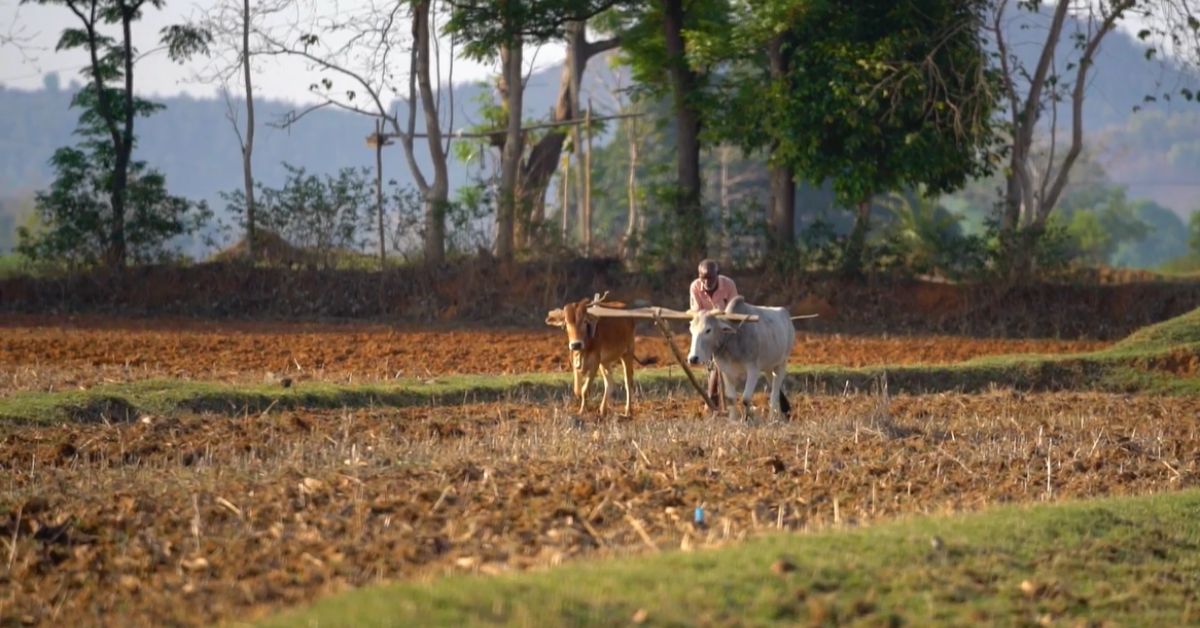
Finding the solution in ragi
Ragi, known locally as mandua, is consumed in Jharkhand “in different food preparations such as porridge, chapati, cake, cookies, kurha, and sweetmeat,” according to this 2020 paper published in the International Journal of Current Microbiology and Applied Sciences.
“In addition to these, boiled and malted germinated grains are used as a food supplement to infants and pregnant women as it does not form acids and are easy to digest,” the paper adds.
Going further, ragi is also “a drought-tolerant and highly nutritional crop which has an economic value and productivity in the range of major cereals.” Given its popularity locally, nutritional value and suitability to local weather conditions, ragi seemed like a good choice to replace paddy.
As Bhagwati explains, “In the past, we used to cultivate ragi but we eventually left it behind and the crops we did end up growing we would sell rather than consume it at home. Once DC Sir re-introduced ragi, he explained the benefits of cultivating and consuming it.”
On a policy level, former district programme officer (DPO) Sujit Bari recalls how in early April 2022, the DC organised a meeting with the district agricultural department, Jharkhand State Livelihood Promotion Society (JSLPS) and the social welfare department. At this meeting, Sujit recalls the DC emphasising how Gumla was suffering from severe malnutrition and anaemia.
During this meeting, Sujit also recalls how the DC also directed officials in these three departments to find approximately 5,000 farmers, particularly women, who were interested in cultivating ragi, and motivate them into actually making that transition.
“We went to each block delivering his message through self-help groups (SHGs) associated with JSLPS. Following this outreach, about 5,500 women farmers volunteered to grow ragi. Although these farmers had some understanding of cultivating ragi, they weren’t familiar with some of the newer technical methods. Before sowing began, we trained them in these new techniques with assistance from a private agency and the government-run Krishi Vigyan Kendra (KVK). At this time, we distributed high-quality ragi seeds, organised live demonstrations in each Block and provided on-field training on correct harvesting processes,” recalls Sujit.
Meanwhile, Sushant recalls that it wasn’t difficult for them to address the public on the benefits of growing and consuming ragi given the real health benefits associated with it.
“But changing long-standing habits is a difficult exercise. Among other things, we would convey messages like how ragi contains high calcium content which allows children to play with more energy. Given how sports is one medium to escape the troubles of poverty, it would be in their best interest to let their children consume ragi,” says Sushant.
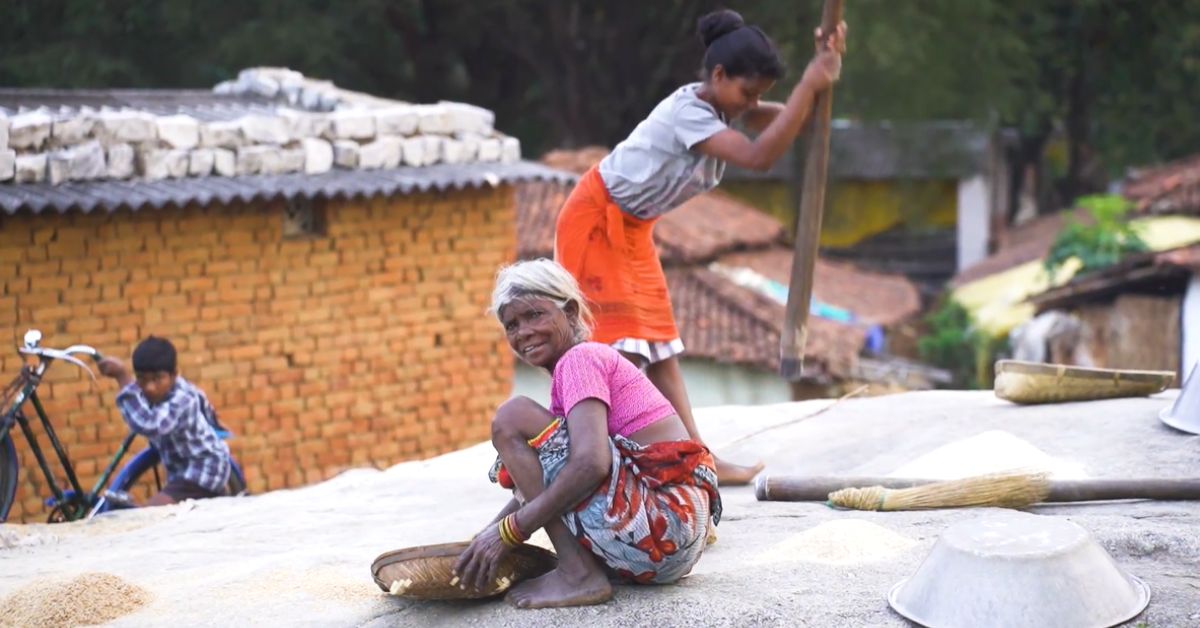
To give farmers the confidence to make that transition away from paddy to ragi, he lists the steps that were taken.
1) Assurances from the collectorate that their ragi harvest will be bought at a good price and that it will be processed and distributed to children and women in their communities.
2) Decision to distribute seeds for free: This addresses a key part of the farmer’s input costs. In March 2022, the administration placed orders for 20,000 kg of quality ragi seeds based on soil suitability from the Birsa Agricultural University in Ranchi and the National Seed Corporation (NSC). “Upon receiving the seeds, we distributed them to the farmers free of cost,” says Sushant.
3) Distributing the seeds on time: “As we were training them on the process of growing ragi, we distributed the seeds too on 15 April. Our sowing season began in June,” says Sushant.
4) “Our farmers were growing weary of the overdependence on limited irrigation infrastructure, rainfall and unpredictability of cultivating paddy. They wanted to be free of these concerns from growing paddy and needed the confidence to make that transition away,” he adds.
5) Lastly, the district administration’s decision to empower women farmers in the community “who had the passion to fearlessly do something new,” notes Sushant.
In just a matter of weeks, before the Kharif sowing season began in 2022/23, Sushant recalls how they had about 5,500 farmers who volunteered to grow ragi in their fields. Meanwhile, the administration also worked towards developing drip irrigation and solar lift systems, and renovating ponds to improve the state of irrigation infrastructure in Gumla.
“As the farmers reached the halfway mark of the production stage (‘baali thootne laga’ or when the grain begins to break out of the husk), we organised regular field visits to explain to farmers that this is a finer seed variety and that unlike conventional ragi crops you will not get big grains. Without the emergence of big grains, farmers often feel they’ve suffered a loss in terms of volume of production or that the grain has not been harvested properly. Instead, we explained the properties of this finer variety of ragi grain they were harvesting,” explains Sushant.
“Going further, we explained to them the kind of pests that may attack their crops and how to stop them. In terms of value, we also gave assurances on the MSP (minimum support price) they would receive for these crops from the government and that they can sell these ragi grains for nearly double the price if they’re officially deemed to be organic. During these field visits, we also raised awareness about the types of organic insecticides (neem-based), pesticides and fertilisers they can source from state-run cooperatives at subsidised rates,” he adds.
During their first field visit before the harvest, officials told farmers to transport their harvest to their respective cluster-level federations (CLFs) in the area. Each CLF has about 100 members minimum comprising different village organisations (VOs) and neighbourhood self-help groups (SHGs). Local communities are well represented in these CLFs and their reach is extensive.
Once these grains are cut, farmers often spread them on the road for the de-husking (separating the husk from the grain) process. Vehicles are often employed to run over these husks and break them, following which the grains emerge. But obtaining grains in this manner has a negative impact on their market value because of the presence of dust and small stones.
“We assured the farmers that they should sell their harvest to us provided they can keep them free of impurities like dust. We assure them of a market for their produce. With State and Central government-run funds, we established platforms in each village to teach farmers how to spread the husked grains on the floor, dry them and separate the grain from it,” he says.
“As per the district agriculture department, we increased net acreage under ragi by 219% in 2022/23. We also saw a 270% growth in ragi production in 2022/23 compared to the year before. In 2023/24, we don’t have the data available and don’t want to speculate. But the total land cultivated under ragi in 2023/24 has crossed 30,000 acres — a 10-time expansion in the area covered under this crop — according to our estimates,” he adds.

Empowering women
In Gumla, as farmers shifted from growing paddy to cultivating ragi, the district administration formed a women-led group named Baghima-Palkot Farmer Producer Company Ltd. This group, consisting of about 500 women, was tasked with buying ragi from local farmers, ensuring its quality, and purchasing good ragi seeds for the following season.
These 500 women were also among the 5,500 farmers who initially volunteered to grow ragi. “Each of these farmers invested Rs 1,500 of their own money to raise capital for the FPO,” notes Sujit Bari, the former DPO in Gumla district.
More importantly, the administration gave the FPO seed money to procure these ragi crops at a good price from these 5,500 farmers. After arriving at this price, these CLFs procured the ragi harvest from the farmers.
“Farmers in Jharkhand would receive a minimum support price (MSP) of anywhere between Rs 16 and Rs 17 per kg for their paddy (rice) harvest. Meanwhile, they could get anywhere between Rs 34 to Rs 35 per kg for ragi which gives them additional income. We didn’t advise them to completely give up paddy cultivation. Instead, we convinced them to cultivate ragi in the upland areas while continuing to cultivate paddy in the lowland areas,” notes Sujit.
Meanwhile, this FPO delegated the process of procuring this harvest from the first set of 5,500-odd farmers to 18 local cluster-level federations and the SHGs operating under them.
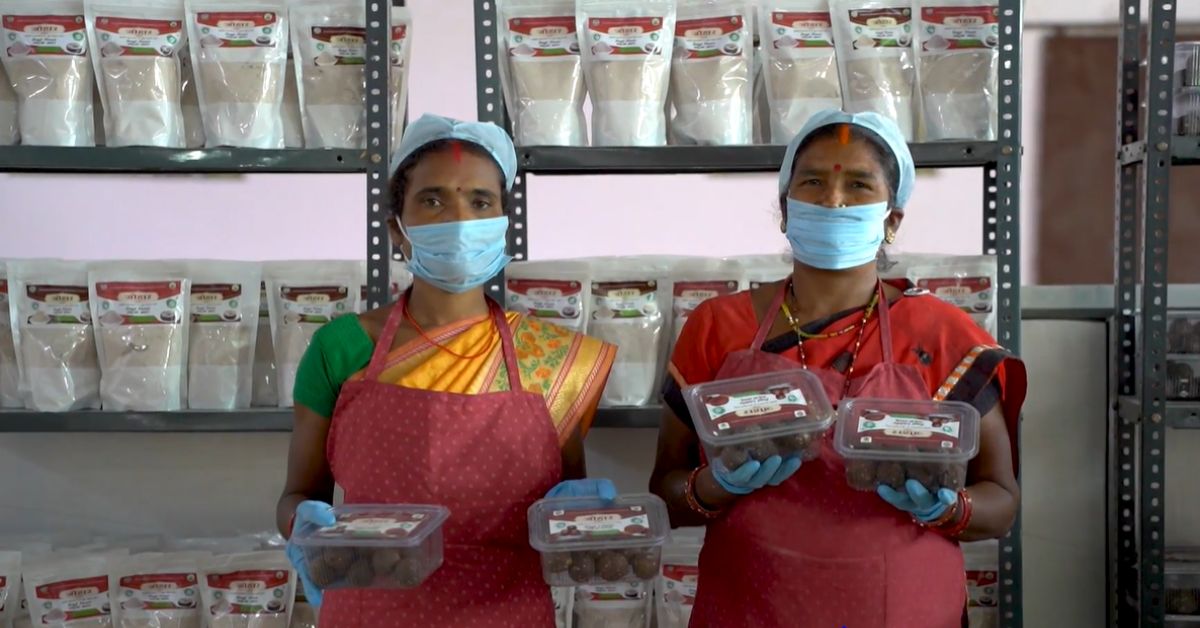
Creating value out of ragi
Now, the question was what would the FPO do with all this harvest? At the local APMC (Agricultural Produce Market Committee) mandi, there was a godown which was defunct.
“The district administration gave the FPO a grant of Rs 50 lakh to establish a processing unit at this godown measuring 10,000 square feet. The godown was divided into essentially four parts — maintaining, processing, packaging and delivering ragi-based stock products. Moreover, this godown was given to the FPO free of cost with no rent to be paid. To power this processing unit, we installed solar panels,” says Sujit.
“At this godown, we installed a small machine that would demonstrate to these women how to grind the grain into flour (atta-chakki machine). In addition, we also installed a larger mechanised plant which could generate one metric tonne of ragi flour per day. We further provided training to the members of this FPO on running this mechanised processing plant to process flour, the process of packaging that ragi flour, etc,” explains Sushant.
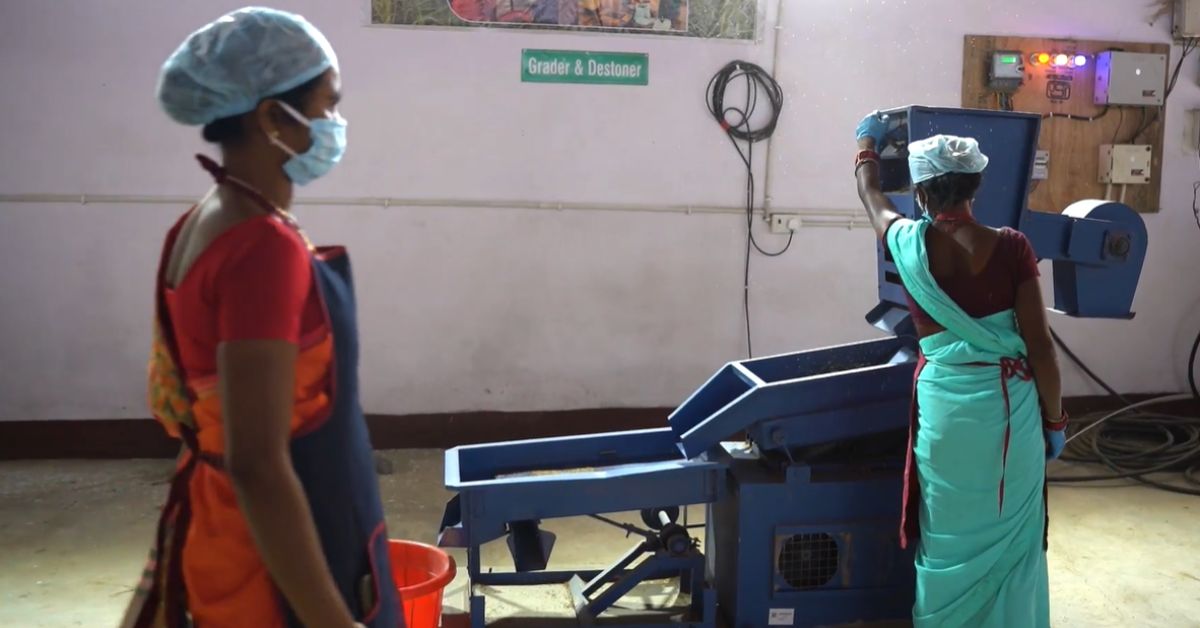
“To market this flour, we engaged the CLFs under which local SHGs operate. Each CLF invested Rs 50,000, bought the ragi flour coming out of the processing plant and marketed them in their respective areas. Grocery shops in Gumla and other districts were also encouraged to buy this flour and market it in their respective areas. If the response to the ragi flour was good, they could get more,” notes Sujit.
However, the district administration knew that selling ragi flour wasn’t going to be enough. To add value, they trained the FPO members running the processing centre to make ragi laddoos and other snacks and distributed them to the local Anganwadi centres.
Days after the FPO started making ragi laddoos, there was a big mela (festival) at the Gandhi Maidan in neighbouring Simdega in November 2022. The FPO had already started selling packaged ragi flour but ragi laddoos were already starting to gain traction.
“Within hours, their entire stock was sold out. This gave them real confidence,” says Sushant.
“For greater exposure, we also took them to a Millet Conclave in Raipur, Chhattisgarh. At the conclave, they sold Rs 50,000 worth of laddoos in just one day. With the success of laddoos, we decided to develop more products out of ragi. Following this event, DC Sir proposed the opening of a ‘Millet Cafe’ in Gumla. Here you can find cookies, samosa and peetha made of ragi, besides a live kitchen where you can get baked items made of ragi,” notes Sujit.
In the meantime, more women-led CLFs reached out to the district administration talking about how they too were capable of making such products. Their advice to these women was to work as collaborators and not competitors. They collaborated with FPO to make other snack items like ragi-based thekua, nimki, and bhujia. “We brought these entities together and they converged into one entity. Today, they produce these snacks on a bigger scale,” says Sushant.
“In the second year of this initiative, we advised these women not to mass launch these products in the national market given the intense competition. They need time to grow. We advised them to focus on rural markets and help facilitate change in food habits which would in turn cement demand for their products in these parts,” he adds.
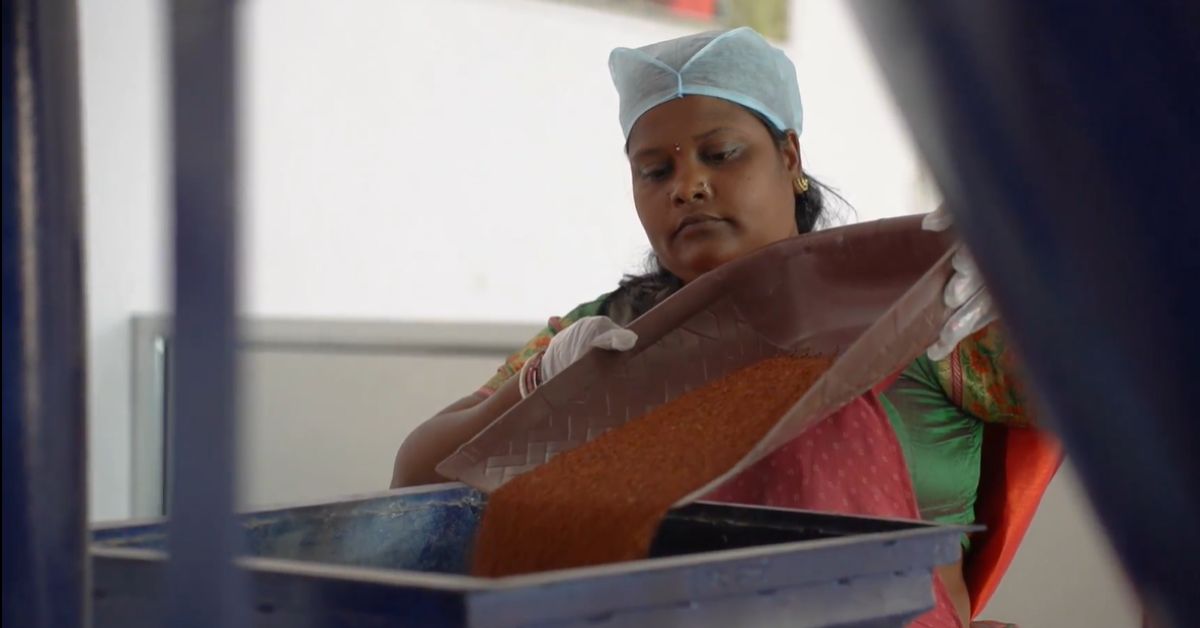
Making this a self-sustainable business
The district administration treated 2022–23 as a demonstration year.
“Farmers didn’t suffer monetarily, growing ragi required fewer agricultural inputs and all their stock was more or less bought out. What’s more, they didn’t have to travel long distances to sell their produce. All their produce was essentially bought in-house. In 2023–24, around 30,000 farmers came to us with their desire to grow ragi. We reached out to Karnataka University and paid them Rs 20 lakh just to buy premium quality ragi seeds for the next season,” says Sushant.
After the first round of seed funding, the district administration told the FPO that there wouldn’t be another to buy this year’s harvest. “Following the initial injection of seed money into the FPO last season, today these women are buying produce straight from the farmers, managing their book of accounts, preparing for the following season, and are even creating individual savings for themselves. This is a successful financial and sustainable model as well,” claims Sushant.

Battling malnutrition and anaemia with ragi
Every month, the district administration began organising intensive screening for severe and moderate malnutrition and anaemia in children and pregnant and lactating mothers. As a result, they developed real-time data for malnutrition and anaemia in the district.
“Once we identified the children and women at risk, we distributed ragi laddoos, snacks and other nutritious items to them on an immediate basis at the Anganwadi centres and their homes. Women who had just given birth were given these ragi laddoos and other assorted ragi-based snacks to take home and develop the habit of consuming these food items,” he says.
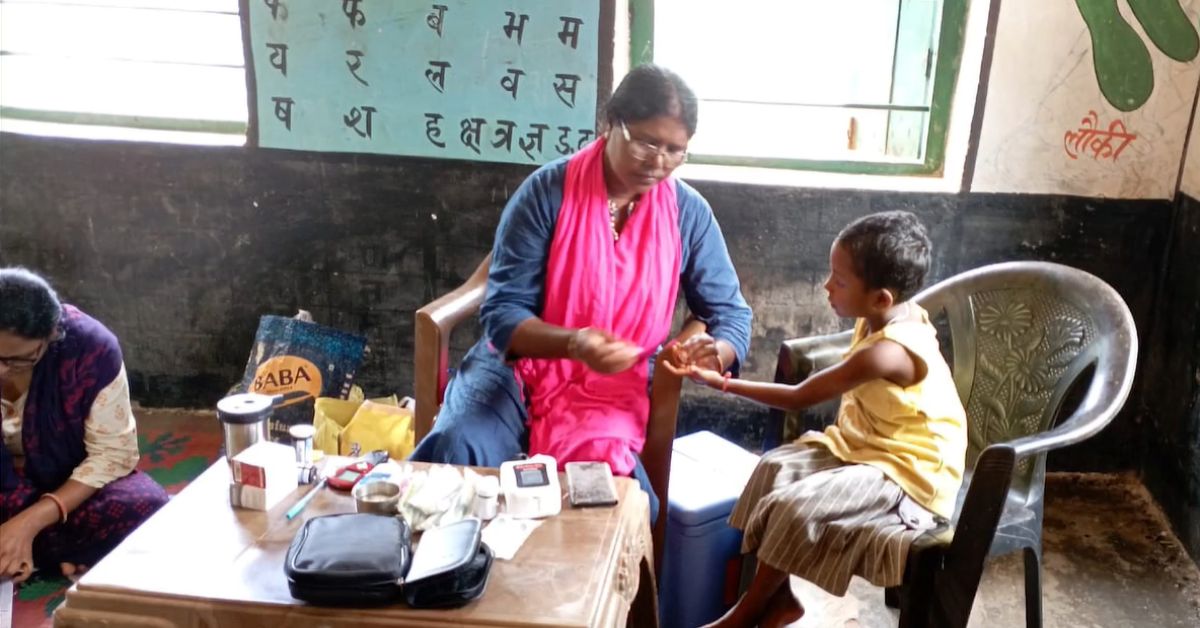
“At the Anganwadi centres, we also distributed items like ragi ka halwa. We are also the only district in India where 70% of the total tuberculosis (TB) patients were screened, identified and given Poshan (food) Kits to improve their immunity. We added ragi elements to these Poshan Kits,” he says.
Going further, Sushant claims that over 400 model Anganwadi centres were set up equipped with digital haemoglobin metres, innovative blue MTC (Malnutrition Treatment Card), height growth charts, and follow-up cards.
“Each school has also been given a weight chart and we have printed a height metre in these educational institutions. What’s more, we have tasked administrators there to maintain an updated profile of the students enrolled there. For their midday meals, we have even added items like drumstick leaves in their daal,” he explains.
“In addition, we have identified 52 types of local leafy vegetables. And depending on what’s available in a given panchayat, we have painted them on the walls of their respective Panchayat Bhavan and listed out their benefits. In the fight against malnutrition, we have taken small yet critical steps, which will have a real impact in five or ten years down the line,” he adds.

Bhagwati Devi, a 40-year-old ragi farmer and member of the FPO recalls, “In the short time he was posted here, DC Sir has done great work for the community. We have left behind the old ways of farming. Today, we are seeing the real benefits of cultivating ragi.”
“Beyond farming, however, we are now running a business where we can sell the products made from the ragi we grow. Today, there are 40 women working with me, who were stuck at home, unemployed and would do odd jobs before we started this company (FPO). The work we are doing today has given us self-respect. Not only do I grow ragi on my land but also work at the processing plant making products out of this ragi and selling them locally. Ragi has now become an integral part of our identity, not just in our district, but elsewhere too,” she adds.
But Sushant is quick to point out that all these initiatives, particularly the one centred around ragi, were a team effort characterised by consistency in effort and clarity of purpose. If you found our stories insightful, informative, or even just enjoyable, we invite you to consider making a voluntary payment to support the work we do at The Better India. Your contribution helps us continue producing quality content that educates, inspires, and drives positive change. Choose one of the payment options below for your contribution- By paying for the stories you value, you directly contribute to sustaining our efforts focused on making a difference in the world. Together, let’s ensure that impactful stories continue to be told and shared, enriching lives and communities alike. Thank you for your support. Here are some frequently asked questions you might find helpful to know why you are contributing?

“This is possible if we can all work together with the necessary rigour, dedication and discipline,” he says. It was little surprise that he became the first ever IAS officer from the state to win the Prime Minister’s Award for Excellence in Public Administration.
(Edited by Pranita Bhat; Images courtesy District Administration, Gumla)
This story made me
-
97
-
121
-
89
-
167





